Snowflakes ( Leucojum vernum ) are a late Winter flowering bulb. The leaves grow up to around 40cm high and the pretty flowers, which appear amongst the leaves, are mostly white with coloured spots on the bottom of the petals. The deep green clumps , which grow ever larger each year are very attractive in a garden setting. For best results, grow them in a semi-shaded spot. They will tolerate most of Australia's climate zones ( cool- temperate to warm ). Snowlflakes are available in nurseries in Autumn as a dormant bulb. I spotted these flowering bulbs in a local sydney garden, planted amongst Yellow Jonquils ( a type of Daffodil ), and they were putting on a wonderful display.
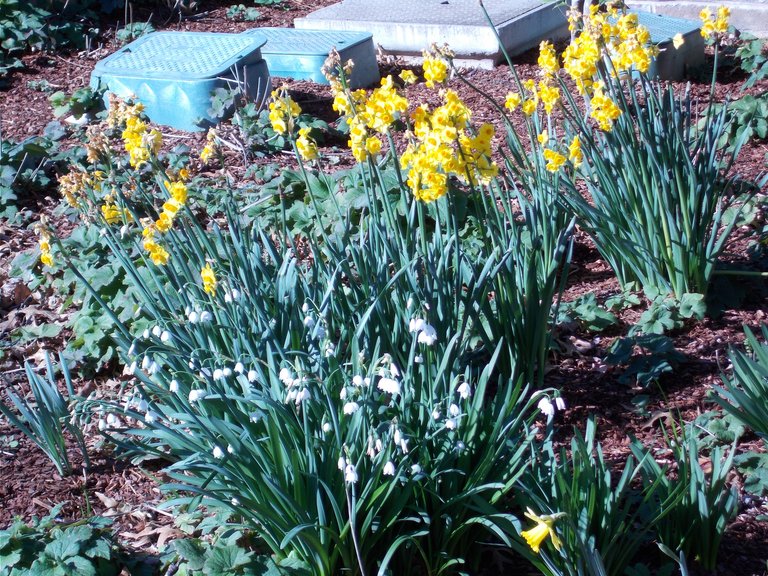
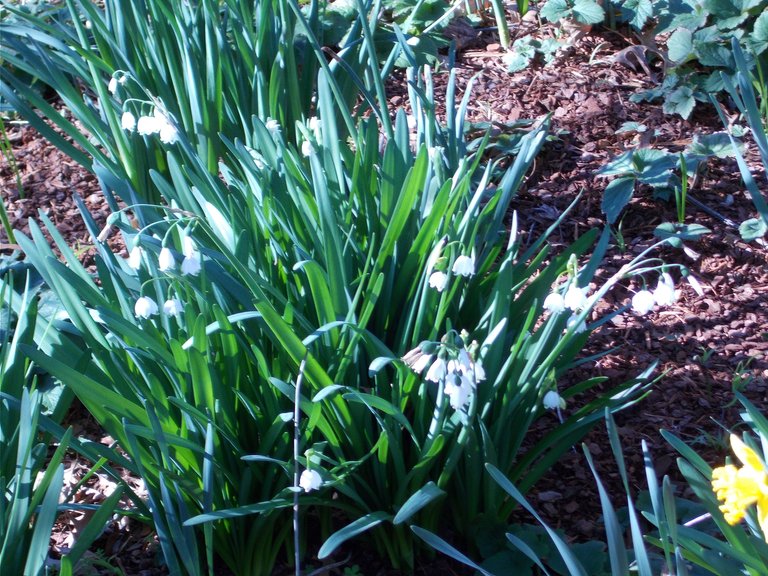
Thank you @ctrl-alt-nwo, for posting these lovely flowers....'Snowflakes'.
Lovely photographs and write-up.
They appear to lend a quiet place in the garden with their white fleurs and bleu-green toned leaves......appreciate the introduction.
All the best.
Cheers!
Snowdrops (Galanthus nivalis) are delicate in appearance and need a cold climate to prosper, so are considered to be rare and unusual. They are temperamental and difficult to grow in most Australian gardens, and the bulbs are expensive to buy.
Snowflakes (Leucojum aestivum;pictured main), on the other hand, hail from Central Europe and grow in our gardens without a murmur, which somehow makes them seem less important.
But forget your prejudices and enjoy the snowflakes. If you don’t have them growing, plant some in autumn when the bulbs are on sale (and, by the way, these bulbs are inexpensive).
source= http://www.homelife.com.au/gardening/plant-guides/plant-guide-snowdrops-and-snowflakes
Fav.comment Award !! Great pics. Thanks.
Leucojum
Leucojum is an European genus with species commonly known as "snowflakes" and often regarded as the poor relation of Galanthus with species known as "snowdrops". Species are regarded as hardy in the south of England, New Zealand, Australia and the southern states of the USA. Leucojum is a member of the Amaryllidaceae family.
The genus Acis was created in 1807 by R.A. Salisbury. In the 1880 the species in this genus were lumped into Leucojum. Dolores Lledo, Aaron Davis, Manuel Crespo, Mark Chase and Michael Fay from RBG Kew in a paper written July 2004 to be published entitled Phylogenetic analysis of Leucojum and Galanthus (Amaryllidaceae) based on plastid matK and nuclear ribosomal spacer (ITS) DNA sequences and morphology have determined that Galanthus is most closely related to Leucojum and that the species formerly included in Acis should be returned to Acis. These species are the small species with narrow leaves and unmarked flowers. The only species to be retained in Leucojum are the robust, wide-leaved, green-marked Leucojum aestivum and Leucojum vernum. This information was provided by John Grimshaw as is the information below describing the difference between the subspecies of Leucojum aestivum.
Leucojum aestivum L. is found across Europe to the Crimea and the eastern side of the Black Sea. It flowers in mid winter in Tasmania contrasting its common name of Summer Snowflake. Grown and photographed by Rob Hamilton. Bulb photo by Travis Owen, shows bulbs that closely resemble bulbs of Narcissus, but differ in having active leaf growth in the Autumn (and even Summer).
There are two subspecies: Leucojum aestivum ssp. aestivum and Leucojum aestivum ssp. pulchellum. In L. aestivum the scape is somewhat flattened and it has two 'sharp' edges. This edge is what botanists term scarious, i.e. unpigmented and translucent, as can be seen if you hold it to the light. In ssp. aestivum this margin has a scattering of minute bumps along it. They can be seen with the naked eye, but a lens would be better, and they can also be felt if you run a finger along the edge. These bumps are said to be always absent in ssp. pulchellum. More useful for gardeners is the fact that ssp. pulchellum flowers 2-3 weeks earlier than ssp. aestivum, with smaller flowers. Photo taken January 2007 by Jay Yourch.
Leucojum aestivum 'Gravetye Giant' is undoubtedly a selection of ssp. aestivum, distributed from William Robinson's garden at Gravetye Manor (near East Grinstead, West Sussex, England) many years ago. It is bigger than the average L. aestivum seen in gardens. First photo by Arnold Trachtenberg, second photo from Hans Joschko, rest by David Pilling.
https://www.pacificbulbsociety.org/pbswiki/index.php/Leucojum
Silly Sausage Award !! You chose nice Pics and good information, thanks.
Flower Snowflakes, beautiful and very charming. All eyes that see it, are tempted.
As for the characteristics, as follows:
Here are some collections that I downloaded on Google!
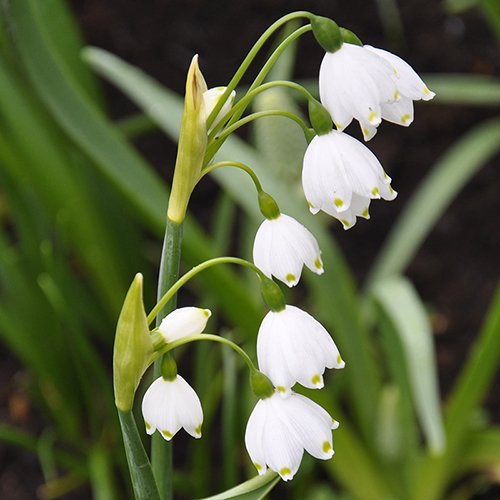
.png)
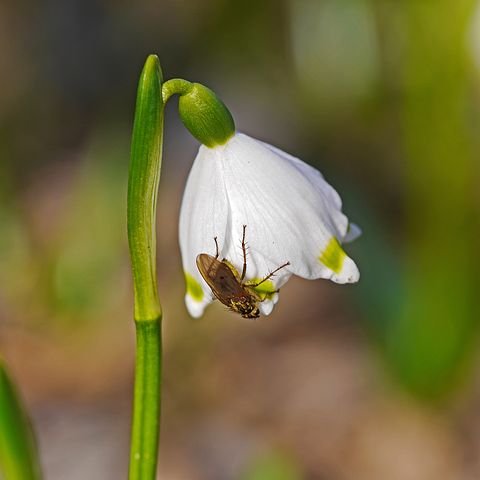
.png)
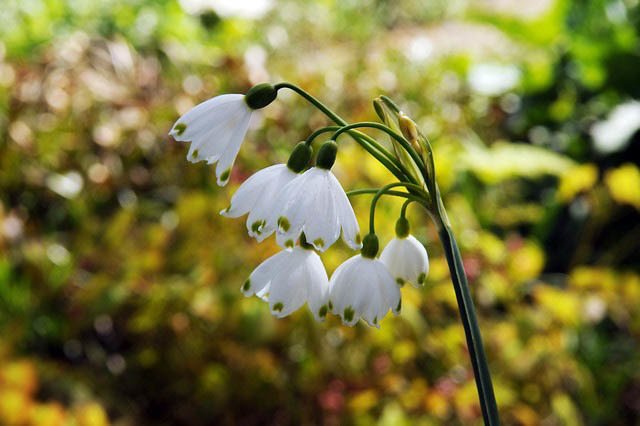
.png)
Source :
https://www.google.com/search?safe=strict&q=Leucojum&stick=H4sIAAAAAAAAAOPgE-LWz9U3MDSwKMi2zFXiBHGM0owyirQss5Ot9JMy83Py0yv184vSE_Myi3Pjk3MSi4sz0zKTE0sy8_OsMjLTM1KLFFBFAQpjSshVAAAA&sa=X&ved=2ahUKEwix-pqSxIDdAhUXX30KHTYNBLwQmxMoADAPegQICRBL&biw=360&bih=598
Fav. comment Award !! You selected great Pics .
Leucojum vernum
Spring snowflake (St. Joseph’s bells)

Source
The spring snowflake is an early bulb reminiscent of snowdrops (Galanthus), though with a more robust habit. It blossoms in early spring as soon as the snow has melted, or even through melting snow, with bell-like and faintly scented white flowers with yellow (L. vernum var. carpathicum) or green (L.vernum var. vernum) tips at the end of their tepals.
Source
Source
This plant may be difficult to grow in the garden, but once the right spot has been found, it forms a large clump and will slowly begin to spread. They seem to thrive best in ground that is damp all spring but dries up in the summer. The bulbs should be planted early in the autumn as they do not survive long storage.
Source
Source
Text Source
Leucojum are amazingly adaptable plants, growing well from chilly parts of Maine to toasty areas in Southern California. Also known as snowflakes, there are two varieties that extend the flowering season.
Unlike most bulbs, snowflakes can thrive in soil that is moist, like that found along the edge of a pond or stream. Leucojum are not eaten by deer, rabbits or rodents. Snowflakes are also excellent naturalizers.
Leucojum vernum has been awarded the prestigious Award of Garden Merit by the British Royal Horticultural Society, a highly sought after honor.
Resources
Despite the name, summer snowflake bulbs (Leucojum aestivum) bloom in mid to late spring in most areas, just a couple of weeks after the spring snowflakes (Leucojum vernum). Both bulbs have grass-like foliage and dainty, fragrant drooping bells. They look almost exactly like snowdrops (Galanthus nivalis), which blooms a couple of weeks before spring snowflakes. You can tell the difference between the two flowers by the fact that snowflakes have a green dot at the tip of each of its six petals, while snowdrops have dots on only three of its petals. Nothing could be easier than snowflake plant care.
Summer snowflakes are the larger of the two plants, growing 1 1/2 to 3 feet tall. The foliage of spring snowflake bulbs grows about 10 inches tall and the flowers bloom on 12-inch stalks. Unlike some spring bulbs, the snowflake’s foliage lasts a long time after the flowers fade. Growing snowflake Leucojum at the back of a low-growing perennial border creates an interesting backdrop for late spring and early summer-blooming flowers.
https://www.gardeningknowhow.com/ornamental/bulbs/snowflakes/growing-snowflake-bulbs.htm
The spring snowflake is a popularly cultivated bulbous plant with delicate white flowers, and belongs to the same family as the snowdrops.
The spring snowflake was described as Leucojum vernum by the renowned Swedish botanist Carl Linnaeus in 1753. The scientific name means 'spring white violet' (Leucojum means 'white violet' and vernum means 'spring'). L. vernum is a widely cultivated, hardy, frost-tolerant plant, notable as a good early nectar and pollen source for bees.
Although both snowflakes (Leucojum species) and snowdrops (Galanthus species) belong to the family Amaryllidaceae, they have clear differentiating characters. While snowflakes have six equal tepals (petals and sepals that are similar to each other), in snowdrops the three inner tepals are shorter and broader than the three outer tepals.
The spring snowflake is native to Central Europe (extending to Belgium, the Pyrenees, northern Italy, and Bosnia and Herzegovina) and has become naturalized in other regions, such as the British Isles and North America.
Images searched from google
Content source: http://powo.science.kew.org/taxon/urn:lsid:ipni.org:names:65769-1
Despite the name, summer snowflake bulbs (Leucojum aestivum) bloom in mid to late spring in most areas, just a couple of weeks after the spring snowflakes (Leucojum vernum). Both bulbs have grass-like foliage and dainty, fragrant drooping bells. They look almost exactly like snowdrops (Galanthus nivalis), which blooms a couple of weeks before spring snowflakes. You can tell the difference between the two flowers by the fact that snowflakes have a green dot at the tip of each of its six petals, while snowdrops have dots on only three of its petals. Nothing could be easier than snowflake plant care. Summer snowflakes are the larger of the two plants, growing 1 1/2 to 3 feet tall. The foliage of spring snowflake bulbs grows about 10 inches tall and the flowers bloom on 12-inch stalks. Unlike some spring bulbs, the snowflake’s foliage lasts a long time after the flowers fade. Growing snowflake Leucojum at the back of a low-growing perennial border creates an interesting backdrop for late spring and early summer-blooming flowers.
.
.jpeg)
Source
.
When spring arrives, the plant’s only demand is moist soil. Water the plants deeply and thoroughly when rainfall is less than 2 inches per week. Keep up the watering schedule as long as the plant is growing. Snails and slugs love to dine on snowflakes. If you see their slime trails in the area, it’s a good idea to set out traps and baits in spring. Some bait is harmless to children, pets and wildlife while others are quite toxic.
.
.jpeg)
.jpeg)
Source
.
Source
I think you have hard time deciding which bulbs to plant around the house. This one look nice and easy to maintain.
In Europe these are called The bells and are the official signs in nature that spring has finally come.
@ctrl-alt-nwo,
The flower is so white! I think it might grow at the hill country side of Sri Lanka! But not in my area! The flower looks like a bell or a jingle! Pretty cool photography and nice information!
Cheers~
Snowflakes, also known as Spring Snowflakes, are a very early flowering bulb bearing clusters of tiny white bell shaped flowers with a green spot on each petal.
The delightful flowers are prolific and very tolerant to most climates in Australia making them extremely easy to naturalise. Prefers a shaded position (however will still grow in full sun) moist soils and is ideal for pots and containers. Late winter flowering.
https://www.gardenexpress.com.au/product/snowflakes/
Oh yeah, beautiful flowers @ctrl-alt-nwo and Leucojum vernum is a BULB growing to 0.2 m (0ft 8in) by 0.1 m (0ft 4in).
It is hardy to zone (UK) 5 and is not frost tender. It is in flower from March to April, and the seeds ripen in July. The species is hermaphrodite (has both male and female organs) and is pollinated by Bees.
It is noted for attracting wildlife.
Suitable for: light (sandy), medium (loamy) and heavy (clay) soils. Suitable pH: acid, neutral and basic (alkaline) soils and can grow in very alkaline soils.
It can grow in full shade (deep woodland) or semi-shade (light woodland). It prefers moist soil.
Cultivation details
Easily grown in ordinary garden soil[1, 90]. Prefers an open rich moist limy soil[1, 42]. Succeeds in shade or semi-shade[90]. If naturalizing in short grass, a light, well-drained soil is essential[245]. The dormant bulbs are fairly hardy and will withstand soil temperatures down to at least -5°c[214]. A very ornamental plant[1]. The flowers have a powerful scent that is likened by some to hawthorns and by others to violets[245]. Members of this genus are rarely if ever troubled by browsing deer or rabbits[233]. A good bee plant[108]. Plants can be naturalized in damp rough grass[200].
Propagation
The seed is best sown as soon as it is ripe in a well-drained soil in a cold frame. Stored seed requires 2 - 3 months cold stratification, it should then germinate in 2 - 4 weeks at 10°c[134]. Sow the seed thinly so that the seedlings can be allowed to grow on undisturbed in the pots for their first year of growth. Give them an occasional weak liquid feed to ensure that they do not become nutrient deficient. Pot up the small bulbs when dormant, planting 2 - 3 bulbs in each pot. Grow them on for another 2 - 3 years before planting them out. Division of offsets in September/October. It is best done as soon as the foliage ripens[1]. Scooping the bulbs.
https://pfaf.org/user/Plant.aspx?LatinName=Leucojum+vernum
The very first flowers after winter. The name comes from the Greek words 'leucos' - milk, white and 'ion' - violet, and indicates the coloration of flowers; originally it was called 'leucocion' - a white violet.
Motherland - Middle Europe, the Mediterranean, Turkey, Iran. The genus combines about 10 species of herbaceous perennial bulbous plants up to 40 cm tall, flowering in spring, summer or autumn. Leaves are linear, belt-like (2-4), appearing often simultaneously with flowers. Flowers are single or in small-flowered umbellate inflorescences, drooping, broad-pointed, up to 3 cm long, white or pink with a green or yellow spot near the top of the petals. Fruit is a fleshy capsule. Seeds oblong or rounded sometimes with a fleshy appendage, black or light brown. Bulbs ovoid, 3-5 cm high and 2-4 cm across, covered with brown or greenish scales. The best time for buying and planting bulbs is July-September, when the plants are at rest. With a long and warm autumn, the time allowed for planting is stretched to the beginning of November.
http://www.plantarium.ru/page/view/item/22521.html
That's really great that you always sharing amazing stufff and i am very glad to know that your passion is to promote the nature and your efforts for its awareness. In your every post you introduce different types of flowers. Today your introduction about Snowflake flower. Looks so pretty. I admired and salute you @ctrl-alt-nwo
Snowflakes ( Leucojum vernum )
source
Magoo-2 found a series of multi accounts of a same owner is following your articles to cheat your generous rewards.
Magoo-2 found these accounts are suspicious & can be multi accounts of a single owner. Conclusion is based on last 30 days transactions:
@rabeel
@salmanbukhari54
magoo-2
Check our latest multi comment spam update report
magoo-2 what are you trying to prove and why you shared misunderstanding and stupidity. The other account is my brother's account and he is in other country then how can i use his account. I think you yourself is a big spammer and sharing fake informations to spoil this beautiful platform. So I requested to honourable @ctrl-alt-nwo to take action against such magoo-2 culprits and get rid off from them who make your lovely posts dirty.I always try to follow the rules and regulations of Steemit and just wanted to spread love and peace here. I also requested to @ned and Steemit management to take serious action against magoo-2 who is playing a role of shits.
Leucojum vernum - spring snowflake
The spring snowflake is an early bulb reminiscent of snowdrops (Galanthus), though with a more robust habit. It blossoms in early spring as soon as the snow has melted, or even through melting snow, with bell-like and faintly scented white flowers with yellow (L. vernum var. carpathicum) or green (L.vernum var. vernum) tips at the end of their tepals.
This plant may be difficult to grow in the garden, but once the right spot has been found, it forms a large clump and will slowly begin to spread. In the Mustila Arboretum, Spring Snowflakes rise in large stands e.g. between Juhlapaikka (Festival area) and Etelärinne (Southern Slope), under the Larches and along the brook. They also thrive in the Alppiruusulaakso (Rhododendron Valley). They seem to thrive best in ground that is damp all spring but dries up in the summer. The bulbs should be planted early in the autumn as they do not survive long storage.
http://www.mustila.fi/en/plants/leucojum/vernum
Leucojum vernum
spring snowflake
Other common names
spring snowflake
spring-flowered snowflake
see more
Family
Amaryllidaceae
Genus
Leucojum are bulbous perennials with narrowly strap-shaped leaves and umbels of bell-shaped white, rarely pink flowers, each tepal often tipped with green
Details
L. vernum is a bulbous perennial to 30cm in height, with strap-shaped glossy dark green leaves and erect stems with 1 or 2 broadly bell-shaped, green-tipped white flowers 2.5cm in width
https://www.rhs.org.uk/Plants/10012/Leucojum-vernum/Details
Really Snowflakes is a wonderful white coloured winter flowers. The Snowflakes garden looks so beautiful. I also appreciate your amazing flowers photography.
Source
Source
Eagerly waiting for your next article as I always learn about some new beautiful flowers from your every article. Keep up your great job sir @ctrl-alt-nwo.
Congratulations @ctrl-alt-nwo!
Your post was mentioned in the Steemit Hit Parade in the following category:
So very beautiful garden, thanks for sharing.really nice for Leucojum vernum flowers
Resteem
Time for the new beginnings this is gonna be amazing awesome shots :)
When I read your posts, I really love the fact that I'm learning more about flowers and plants! Thanks for sharing and Have a great day!
The spring snowflake is an early knob reminiscent of snowdrops (Galanthus), however with a more vigorous propensity. It blooms in early spring when the snow has dissolved, or even through melting snow, with ringer like and faintly scented white blossoms with yellow (L. vernum var. carpathicum) or green (L.vernum var. vernum) tips toward the finish of their petals.

This plant might be hard to develop in the garden, yet once the correct spot has been discovered, it frames a huge bunch and will gradually start to spread.

They appear to flourish best in ground that is damp all spring yet becomes scarce in the late spring. The bulbs ought to be planted right in autumn because they do not survive long when in storage
Sources
1234
We have such flowers that symbolize the arrival of spring. The Latin name of the white-haired, Leucojum, goes back to the phrase "white violet". This genus combines about 10 species of herbaceous bulbous perennial plants blossoming in spring, summer or autumn. A white spring blossom is an early-spring ephemeroid that has a bulb 3-4 cm in length. Blossoms on the first thawed patches, the leaves develop at the end of flowering. Height of peduncle up to 20 cm, leaves up to 30 cm long. Flowers with a pleasant smell and an amazing location to yourself, because at the sight of these flowers everyone's mood rises in anticipation of warm days.
https://www.supersadovnik.ru/plant/belocvetnik-vesennij-1536
Thank you for sharing @ctrl-alt-nwo
Leucojum vernum vagneri
Description
Spring Snowflake. Makes strong clumps of bulbs, often mistaken for a snowdrop, since it flowers at much the same time, but it has lampshade-like bells, made up of six pointed petals held open wide, showing green tips. It carries two flowers per stem, above lush, strap-shaped leaves. It differs from L. vernum in being larger and more robust.
Aspect Full sun
Flowering Period Feb | Mar
Foliage Not evergreen
Growth Habit Clump-forming
Hardiness Fully hardy
Height 23cm
Soil Most types
Spread 8cm
http://www.bethchatto.co.uk/i-n/leucojum/leucojum-vernum-vagneri.htm
I think I know these as 'snowdrops'. Am I confused or is it the same flower?
Snowdrops are not the same flower. That's why i refer to the Botanical name, Leucojum vernum , it avoids confusion.
LOL I still got confused. Thanks for putting me right.
They look beautiful. We also get them in spring here in Germany. It´s always a good indicator that spring is near.
Very pretty flowers, @ctrl-alt-nwo
Thank you for the interesting description and your photos.
Flowers are like little bells,
they look very gentle and look very fragile,
like little snowdrops )
sourse
These are Snowdrops, not Snowflakes ( Leucojum vernum ), but thanks for the pic.
Beautiful flowers! The most interesting thing about these colors, I recently found out. This information indicates fraud, but it is associated with this flower. Honey, yes, honey! On the shelves of shops sometimes there is honey, which indicates that the bees extracted it from snowdrops. This is a lot of fun for those who know and this is a harmful bait, for those who do not know that snowdrops appear earlier than bees for the first time, after winter, leave their beehive and go on their first, spring flight. In our region, where they sell such honey, the dates of the appearance of the snowdrops and the date of departure of the bees, do not coincide))
Snowdrops are not the same plant as Snowflakes - Leucojum vernum.
Thanks for the clarifications @ctrl-alt-nwo! Both plants belong to the same family Amaryllidaceae. It's easy to be mistaken))
Your flowers are looking good. I also like to grow flowers plant at my home courtyard.
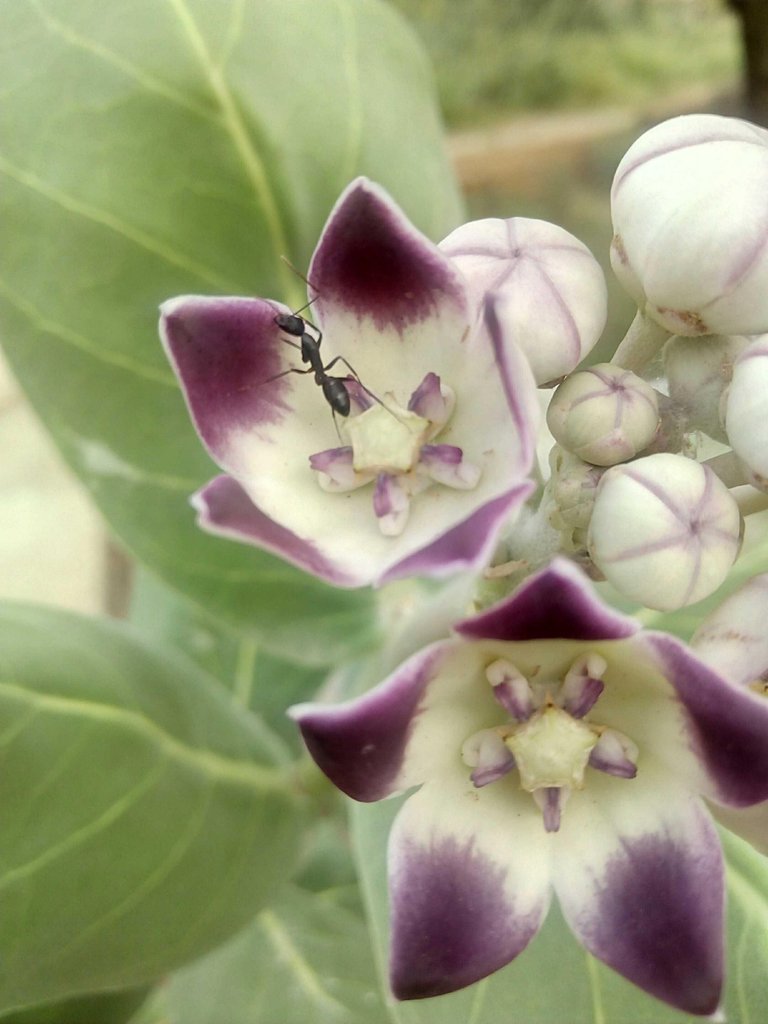
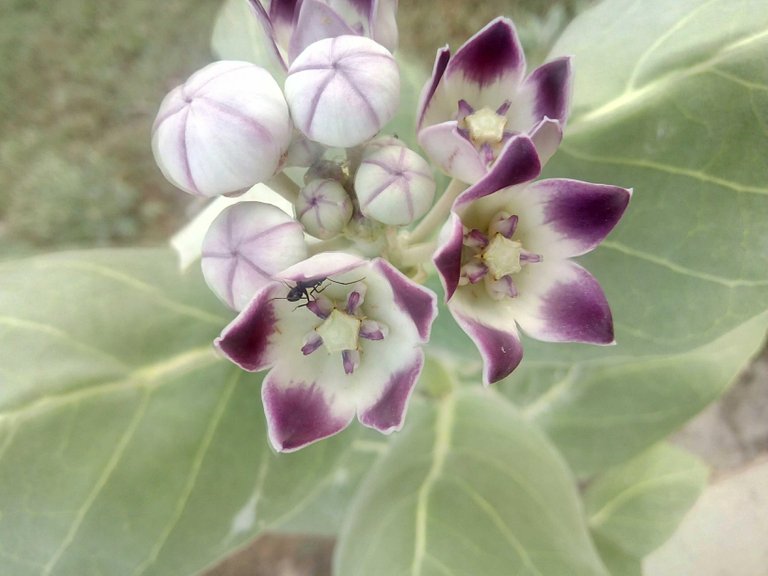
I've captured a flowers photograph some day ago but I didn't know its English name as see below:
Question ❓
Did you know about the above flowers?
I'll wait for your answer.
My best guess would be a Nicotiana ( related to tobacco plant ) but i can't be sure.
Beautiful flowers. Remind a large number of small bells on the thread. Good luck to you and Love.
Really excellent photography and good information. I love this type flowers very much but this flowers not in my area of Bangladesh. But many wonderful flowers in my country. I share one photo of Bangladeshi flowers.
Thanks for the flower !
Although the flowers are small, but very beautiful and colorful.
Ohhhh wao sir such a fabulous photography...flowers looks so pricious....flowers looks so wonderful...i really like yellow flowers....flowers are more important in our life....thanks for sharing this great post..
Leucojum vernum
Leucojum vernum, called spring snowflake,[2] is a perennial bulbous flowering plant species in the family Amaryllidaceae (the daffodil family).[1] It native to central and southern Europe from Belgium to Ukraine. It is considered naturalized in north-western Europe, including Great Britain and parts of Scandinavia, and in Georgia and Florida in the United States. It is cultivated as a spring-flowering ornamental bulbous plant. Usually a single white flower with greenish marks near the tip of each tepal is borne on a stem about 10–20 cm tall, occasionally more.
Description
Leucojum vernum is a perennial bulbous plant, 12–35 cm tall in flower. Its leaves, which appear at the same time as the flowers and continue to elongate during flowering, are 5–25 mm wide and 10–25 cm long, generally reaching to below the level of the flowers. The flowering stem (scape) has a small central cavity and two narrow wings. The pendant flowers appear in spring and are usually solitary, rarely in an umbel of two. The flowers have six white tepals, each with a greenish or yellowish mark just below the tip. Each tepal is 15–25 mm long. The whitish seeds are about 7 mm long.[2][3][4]
Taxonomy
Leucojum vernum was first described by Carl Linnaeus in 1753.[1][5] The epithet vernum means "of the spring".[6]
Varieties
Two varieties are accepted by the World Checklist of Selected Plant Families:[7]
Leucojum vernum var. carpathicum Sweet – Carpathian Mountains (Czech Republic, Romania, Ukraine)
Leucojum vernum var. vernum
L. vernum var. carpathicum is distinguished by presence of yellow rather than greenish markings at the tip of each tepal. Some botanists also recognize var. vagneri, with two flowers per scape.[2]
https://en.wikipedia.org/wiki/Leucojum_vernum
magoo-2 found a series of multi accounts of a same owner is following your articles to cheat your generous rewards.
magoo-2 found these accounts are suspicious & can be multi accounts of a single owner. Conclusion is based on last 30 days transactions:
@masud1234
@dtube2
magoo-2
Check our latest multi comment spam update report
Leucojum vernum
Leucojum vernum, called spring snowflake, is a perennial bulbous flowering plant species in the family Amaryllidaceae (the daffodil family). It native to central and southern Europe from Belgium to Ukraine. It is considered naturalized in north-western Europe, including Great Britain and parts of Scandinavia, and in Georgia and Florida in the United States. It is cultivated as a spring-flowering ornamental bulbous plant.
Leucojum
Leucojum is a small genus of bulbous plants native to Eurasia belonging to the Amaryllis family, subfamily Amaryllidoideae.[2][3][4] As currently circumscribed, the genus includes only two known species,[1] most former species having been moved into the genus Acis. Both genera are known as snowflakes.
Leucojum is a compound of Greek λευκος, leukos "white" and ἰόν, ion "violet". The spelling Leucoium is also used. Other common names include snowbell, dewdrop, and St. Agnes' flower.
Description
Leucojum vernum
Until 2004, the genus Leucojum was treated as including species now placed in Acis. Leucojum when narrowly circumscribed consists of only two species, Leucojum aestivum and Leucojum vernum. Compared to Acis, Leucojum has hollow rather than solid flower stalks (scapes), white flowers with green or yellow marks on both the inner and outer three tepals, flower stems (pedicels) at least as long as the spathes enclosing the inflorescence, and larger seeds, 5–7 mm across. Like the related snowdrops (Galanthus), Leucojum has wider strap-shaped leaves rather than the usually narrowly filiform ones of Acis, 5–20 mm wide in L. aestivum and up to 25 mm wide in L. vernum.[3]
Taxonomy
The genus Leucojum was erected by Carl Linnaeus in 1753,[1] initially for two species, Leucojum vernum and L. autumnale.[6] In 1759, he added the species L. aestivum.[7]
In 1807, Richard Anthony Salisbury illustrated two species in The Paradisus Londinensis. He initially used the name Leucojum autumnale for the plant illustrated in plate 21, but when discussing Leucojum pulchellum (now included in L. aestivum), illustrated in plate 74, Salisbury noted the differences between the two species, and considered them sufficient to move Leucojum autumnale into a new genus, Acis.[8][9] Although some botanists accepted the split between Leucojum and Acis, including Robert Sweet in 1829,[10] most did not; for example, Brian Mathew in 1987 placed all the species in Leucojum.[11] Acis was reinstated in 2004, after it was determined on morphological and molecular grounds that the broadly defined genus Leucojum was paraphyletic, with Acis and a more narrowly defined Leucojum being related as shown the following cladogram.[3]
https://en.wikipedia.org/wiki/Leucojum
Leucojum
Leucojum is a small genus of bulbous plants native to Eurasia belonging to the Amaryllis family, subfamily Amaryllidoideae. As currently circumscribed, the genus includes only two known species, most former species having been moved into the genus Acis. Both genera are known as snowflakes.
Leucojum is a compound of Greek λευκος, leukos "white" and ἰόν, ion "violet".
magoo-2 found a series of multi accounts of a same owner is following your articles to cheat your generous rewards.
magoo-2 found these accounts are suspicious & can be multi accounts of a single owner. Conclusion is based on last 30 days transactions:
@masud1234
@dtube2
magoo-2
Check our latest multi comment spam update report
Snowflakes is a wonderful flowers. I always like your flowers artice. Your country Australia is a beautiful country. Australian flowers are very beautiful.
Like somebody mentioned already they look like snowdrops from a distance.
Really Snowflakes is a lovely flower. They are looking so beautiful. Sir @ctrl-alt-nwo you are such a great man. Your mind is pure as you always share some beautiful flowers with us. I appreciate your great job.
Such a beautiful flower plant for gardening.
Yellow flowers are very eye catching . Good gardening blog by you .
@ctrl-alt-nwo
wow nice post. wonderful garden .this isgreat article & nice photography
##Upvote/Resteem###
What a wonderful flowers sir as it occupies less place to grow they will be a special attraction.Thanks for sharing.
This is so cool sir just love reading your blogs they are very informative.
Nice post that you have shared some great tips i think these flowers cant grow in my place thanks for your wonderful information.
This is really awesome your each and every post is a great exhibition,hope i can see you daily sir,have a great day.
This will easily grows in europe and many cold countries but we cant grow them in asia countries great information sir,have a nice day.
This flowers are looking so awesome i am so much delighted to come across your blog post,thank you sir.